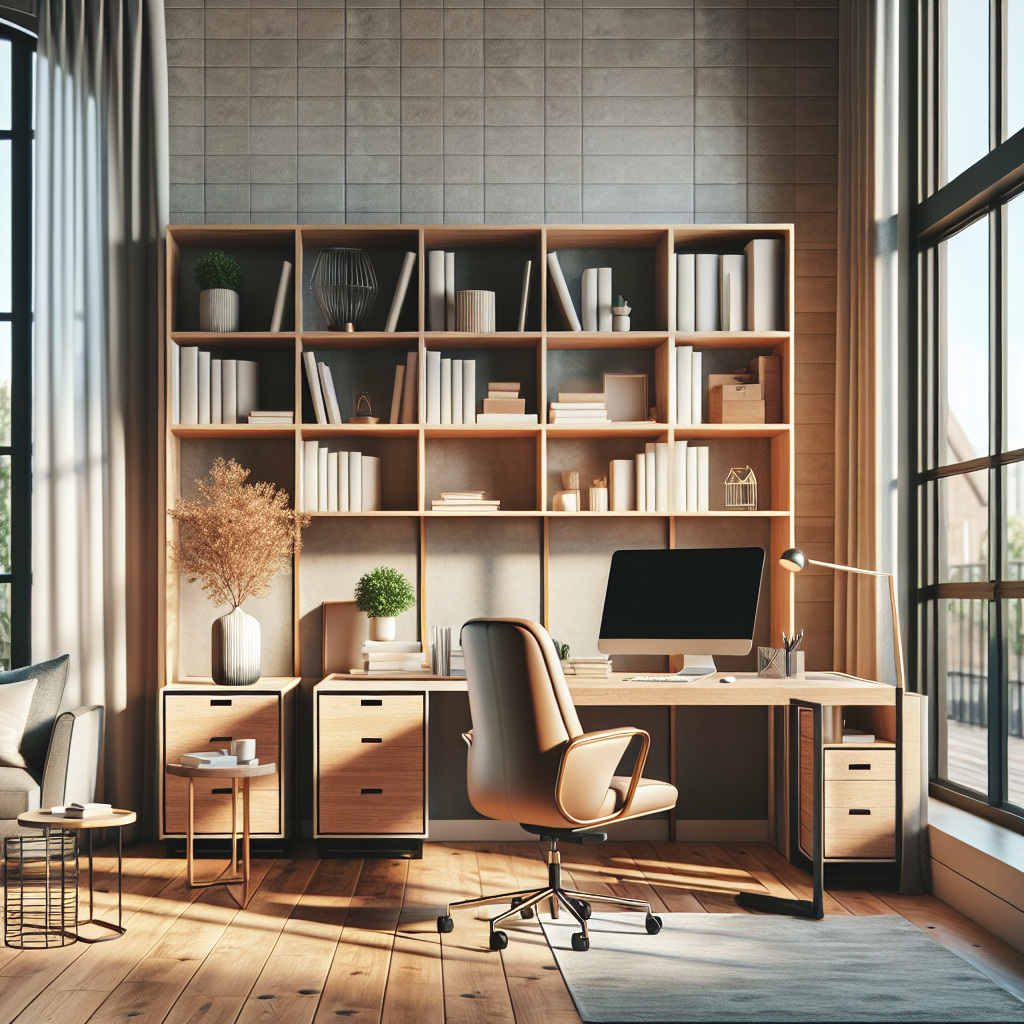Introduction to Work-from-Home Furniture Layouts
In the era of remote work, having a home office that promotes both productivity and wellbeing is crucial. The best furniture layouts for work-from-home flow are not only about aesthetics but also about functionality and ergonomics. This article explores various furniture arrangements that can help you create an effective and comfortable workspace at home.
Understanding the Basics of Ergonomic Furniture Arrangement
The foundation of any good home office starts with ergonomics—the science of designing the workplace environment to fit the user’s needs. An ergonomic furniture layout ensures that your workspace components, such as your desk, chair, and computer, are arranged to minimize strain on your body, preventing fatigue and discomfort. According to the CDC’s guidelines on ergonomics, the chair should support your spinal curves, and the top of your monitor should be at or just below eye level.
Key Furniture Pieces for Optimal Work-from-Home Flow
Choosing the right furniture is pivotal for creating an effective work-from-home environment. Essential pieces include:
- Adjustable Desk: An adjustable or standing desk allows you to change your position throughout the day, which can help reduce the risk of back pain and other posture-related issues.
- Ergonomic Chair: A chair that supports your back, has adjustable armrests, and can swivel is ideal for maintaining proper posture and ensuring comfort.
- Storage Solutions: Adequate storage, such as filing cabinets and shelves, helps keep your workspace tidy and your mind clear.
Layout Designs That Enhance Productivity
How you arrange your furniture can significantly impact your work efficiency. Here are some layout ideas:
- The U-Shape Layout: Surround yourself with everything you need by setting up your desk, filing area, and a secondary workspace in a U-shape. This layout keeps all necessary items within reach and allows for maximum productivity.
- The L-Shape Layout: Ideal for corner spaces, the L-shape layout offers extensive desk space and can be paired with a secondary seating area for reading or brainstorming.
- The Minimalist Layout: For those who prefer a clutter-free environment, a minimalist layout with just a desk and a few essentials can help maintain focus and clarity.
Integrating Personal Wellbeing into Your Workspace
Beyond functionality, your home office should also be a space where you feel relaxed and motivated. Consider integrating elements such as:
- Natural Light: Position your desk near windows to benefit from natural light, which can boost your mood and productivity.
- Plants: Adding greenery to your office can reduce stress and improve air quality. Studies have shown that plants in the workspace can boost both productivity and creativity.
- Personal Touches: Personalize your space with artwork, photos, or inspirational quotes to make the area uniquely yours and more inviting.
Conclusion
The transition to working from home can be made smoother and more productive with the best furniture layouts for work-from-home flow. By focusing on ergonomics, functionality, and personal wellbeing, you can create a home office that not only meets your professional needs but also enhances your overall quality of life.
As remote work continues to evolve, creating a workspace that is both efficient and enjoyable is more important than ever. Consider these layouts and tips to transform your work-from-home experience.


